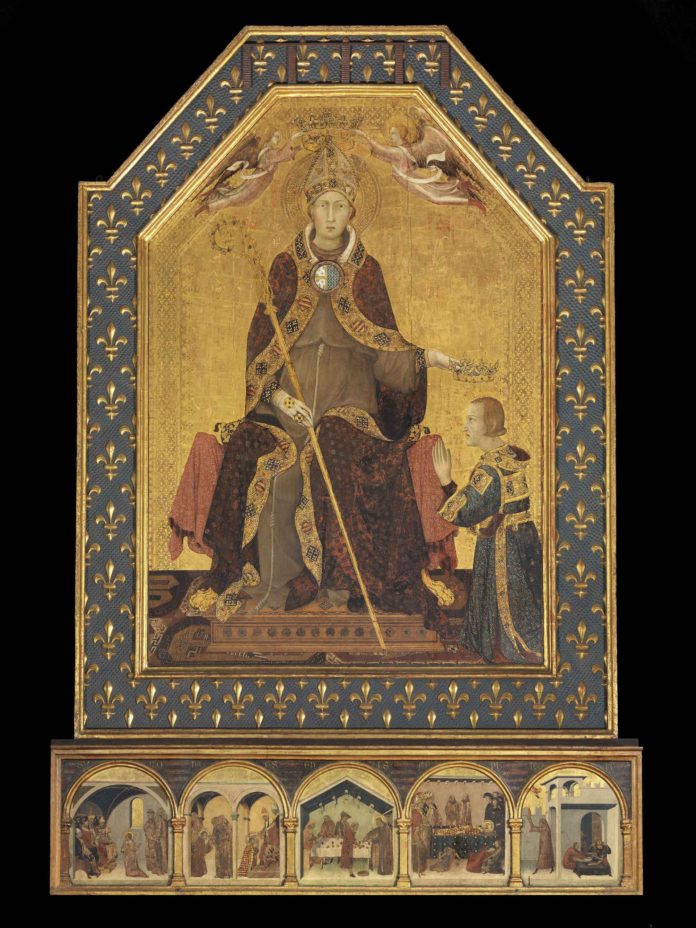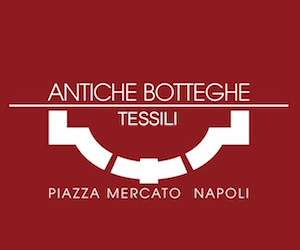L’arte è un veicolo eterno di bellezza. Perciò va preservata. Soprattutto in un luogo che è culla di una storia artistica secolare, come il museo di Capodimonte. E tra le iniziative di recupero c’è quella, appena avviata, del restauro della grande pala “San Ludovico da Tolosa” (foto) di Simone Martini, capolavoro medievale, il più importante fra i dipinti trecenteschi su tavola del periodo angioino di Napoli.
L’intervento di manutenzione straordinaria, dopo oltre 65 anni, è un progetto realizzato grazie alla prima collaborazione quadro tra il museo diretto da Eike Schmidt e l’Opificio delle Pietre dure di Firenze. La formula adottata è quella del ‘cantiere didattico’ creato nella stessa sala (la 66 del secondo piano) che ospita la pala dal 1966. L’ intervento si concluderà entro sei mesi.
Un restauro epocale- come sottolinea il direttore Eike Schmidt– sia per l’importanza dell’opera, il cui splendore affascina da sempre visitatori di Capodimonte, che per il suo significato nella storia della città, in particolare quella della fiorente Napoli angioina con la sua corte di mecenati nel cuore del Mediterraneo.
Mel 1966 fu Raffaello Causa a spostare l’ultima volta la grande pala dal muro per porla nella posizione attuale con un sostegno in ferro che la stacca lievemente dalla parete.
Le operazioni di manutenzione del Simone Martini interessano il verso del dipinto, funzionali allo studio della struttura lignea, alla chiusura delle sconnessioni e delle fessurazioni presenti sul supporto e all’eventuale ricostruzione di piccole mancanze sulla predella.
Il San Ludovico di Tolosa che incorona Roberto d’Angiò di Simone Martini, è entrato nella collezione dell’allora Museo Nazionale (attuale Mann) nel 1921, e poi trasferito al Museo e Real Bosco di Capodimonte nel 1957, anno della nascita del museo nella Reggia.
Ludovico, il principe angioino figlio di Carlo II e Maria d’Ungheria che aveva rinunciato al trono in favore del fratello Roberto per abbracciare l’ordine francescano, morì nel 1297 e fu canonizzato nel 1317, quando gli storici concordano fu eseguita l’opera. Due anni dopo gli Angioini trasferirono alcune delle sue reliquie da Marsiglia a Napoli.
La sfarzosa tavola ha anche una enorme importanza storico politica perché commissionata per rafforzare il prestigio della casa regnante. E dal punto di vista artistico rappresenta una delle grandi opere degli inizi della carriera di Simone Martini.
Per saperne di più
Learn more
capodimonte.cultura.gov.it
Capodimonte Museum/ Simone Martini’s “Saint Louis of Toulouse” is being restored: educational workshop in the room housing the work
Art is an eternal vehicle of beauty. Therefore, it must be preserved. Especially in a place that is the cradle of centuries-old artistic history, such as the Capodimonte Museum. Among the restoration initiatives is the recently launched renovation of Simone Martini’s large altarpiece “Saint Louis of Toulouse”, a medieval masterpiece and the most important of the 14th-century paintings on wood from the Angevin period in Naples.
The extraordinary maintenance work, after more than 65 years, is a project carried out thanks to the first framework collaboration between the museum directed by Eike Schmidt and the Opificio delle Pietre Dure in Florence. The formula adopted is that of an “educational workshop” created in the same room (room 66 on the second floor) that has housed the altarpiece since 1966. The work will be completed within six months.
It is an epoch-making restoration, as director Eike Schmidt points out, both for the importance of the work, whose splendour has always fascinated visitors to Capodimonte, and for its significance in the history of the city, particularly that of flourishing Angevin Naples with its court of patrons in the heart of the Mediterranean.
In 1966, Raffaello Causa moved the large altarpiece from the wall for the last time to place it in its current position with an iron support that slightly detaches it from the wall.
The maintenance work on Simone Martini’s painting involves the reverse side of the painting, which is necessary for studying the wooden structure, closing the gaps and cracks in the support, and possibly reconstructing small missing pieces on the predella.
Simone Martini’s Saint Louis of Toulouse Crowning Robert of Anjou entered the collection of the then National Museum (now the Mann) in 1921, and was then transferred to the Museum and Royal Park of Capodimonte in 1957, the year the museum was established in the Royal Palace.
Louis, the Angevin prince son of Charles II and Mary of Hungary, who had renounced the throne in favour of his brother Robert to embrace the Franciscan order, died in 1297 and was canonised in 1317, when historians agree the work was executed. Two years later, the Angevins transferred some of his relics from Marseille to Naples.
The sumptuous panel also has enormous historical and political significance because it was commissioned to reinforce the prestige of the ruling house. From an artistic point of view, it represents one of the great works of Simone Martini’s early career.










